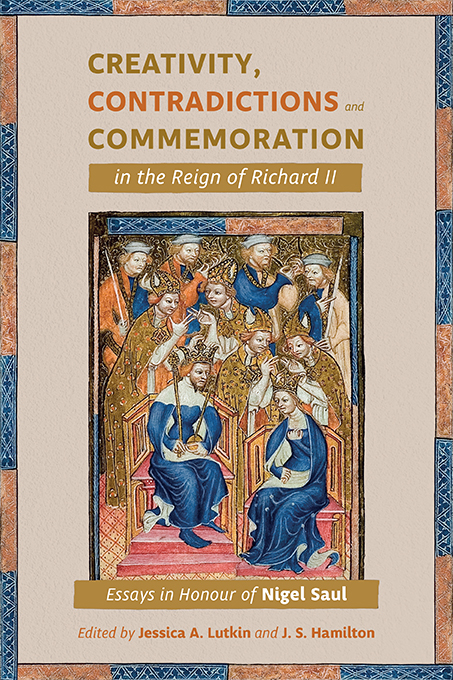 Creativity, Contradictions and Commemoration in the Reign of Richard II
Creativity, Contradictions and Commemoration in the Reign of Richard II 14 - The ‘Dreadful Draytons’ of Dorchester and their Brasses
Published online by Cambridge University Press: 26 May 2022
Summary
The abbey church of Dorchester on Thames (or more properly on Thame, the tributary river) remains almost complete as a parish church. The brasses there, on the other hand, have nearly all been destroyed. There are still many indents, some in exceptionally good condition, but from the Middle Ages only a few plates survive. They had more or less been reduced to their present state by 1644, when Richard Symonds drew several of them, except for the figures of the Idley brass, which only disappeared between 1780 and 1792. Many of the indents clearly belonged to canons of the abbey. Indeed, the only monastic brass to survive was that of the uncle of the town's great benefactor, Richard Bewforest II, whose own brass survives in part though it has suffered much. The other surviving brass fragments mostly belong to members of the Drayton family, and these deserve particular attention. This essay will examine the careers and brasses of this minor gentry family from Oxfordshire, and consider how brasses link them together in life and also in death.
The family of Drayton had slightly dubious origins and uncertain claims to distinction. Much work was done by Eric St John Brooks, in dialogue with Edmund Greening Lamborn, to disentangle the family, and more information is given in the Victoria County History. The original family name seems to have been Napper, in descent from the Nappers of Pishill, who held Pishill by serjeantry in the twelfth and thirteenth centuries as naperer to the king (that is, one who looked after his napkins). The first to claim the name of Drayton was Nicholas. He acquired the estate and took the name of Drayton St Leonard, which is within the peculiar of Dorchester, having been one of the chapelries served from the abbey since the days when it was a cathedral; Pishill, over the ridge of the Chilterns, is also part of the peculiar of Dorchester. This Nicholas de Drayton ‘was either the same as or a close connection of Nicholas le Naper of Drayton who in 1362 acquired the estate of John Sheepwash in Drayton, Baldon, and Clifton’.
- Type
- Chapter
- Information
- Creativity, Contradictions and Commemoration in the Reign of Richard IIEssays in Honour of Nigel Saul, pp. 269 - 286Publisher: Boydell & BrewerPrint publication year: 2022
